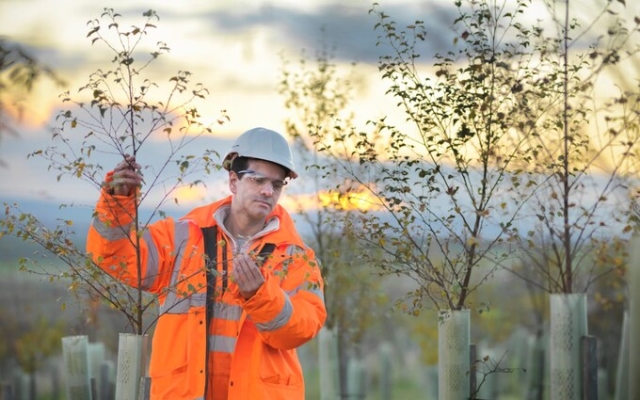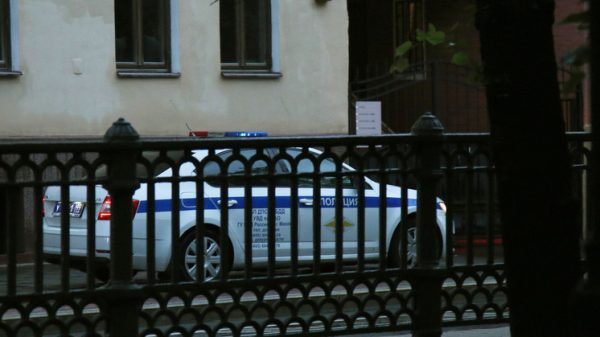 The Conservative Party has said it will be planting an additional 30,000 hectares of trees per year by the end of this parliament. Credit: Monty Rakuzen/Getty Images
The Conservative Party has said it will be planting an additional 30,000 hectares of trees per year by the end of this parliament. Credit: Monty Rakuzen/Getty Images
The Tories are set to skip a pledge to plant a manifesto tree, a leading charity has warned, as numbers show little progress has been made towards the goal since the 2019 election.
Conservatives have promised to plant an additional 30,000 hectares of trees a year by the end of this parliament as part of their plan to 'invest in nature'.
But the latest statistics show the government has since failed to meet even half of the UK target , and annual figures remain almost unchanged at the level of 13,000 to 14,000 hectares.
Preliminary data indicate that crop areas have actually declined. last year, dropping below 13,000 ha for the first time since 2017-2018. Prior to this, levels have fluctuated since the election, peaking in 2021-22.
The latest data available across the UK is only for woodland, i.e. trees planted elsewhere such as farms, parks and urban sites — not included.
Successful implementation is not achievable
Meanwhile, England's key public sector tree planting fund has been tagged 'red' by the government, meaning that successful implementation of the program appears elusive.
The Nature For The Climate Fund (NCF) has been downgraded from 'amber'. » rating by the Infrastructure and Projects Authority (IPA), which assesses the progress of the implementation of major government schemes.
It comes as Tory clashes over environmental issues are giving Rishi Sunak headaches and frustrated MPs seeking to soften the impact of government zero-emissions plans on households already hard hit by the cost of living crisis.
The Woodland Trust , the UK's largest forest conservation charity, has warned that the current trajectory suggests it is «highly unlikely» that the Tories will reach their 30,000 ha target by 2024-25, when Parliament's five-year term comes to an end.
Nick Phillips, a top proponent of forest policy, said the charity expects plantings to increase again next year, but a «drastic change in approach» is needed if conservatives are to stand a chance of reaching their goal.
» Meeting the target will require the rate of creation to more than double at the UK level. Something that hasn't been seen for decades,” he said.
Tree policy in the UK is a referred case. In England alone, the goal is to plant 7,500 hectares a year by the end of this Parliament. But preliminary data show that only 3,130 ha of new forest areas were created in 2022-2023, and only 9,280 ha from 2019-2020.
Numbers are slightly higher when trees planted beyond outside of the forest. , and the amount for 2022–2023 will increase to 3,627 ha. More comprehensive statistics for the UK as a whole are expected to be published next month.
Initial data suggest that acreage in England has increased significantly over the past year — by about 1,000 hectares — while Wales has also seen growth. But decline in Scotland, which accounts for the largest amount of new woodland each year, means the total across the UK has declined.
«Five years in terms of trees is nothing»,
John Stokes, Director of Trees, Science and Research at the Tree Council was positive about the overall direction of the movement, commending the government's commitment to planting trees in recent years, especially outside of forest areas, and emphasizing the importance of «aspirational goals».
< p>But he made it clear that this would not be «the work of one parliament» because «five years in three terms is nothing».
Asked if he thinks ministers are unlikely to reach 30,000 hectares a year by the end of this parliament, he said: «We will need the long-term commitment of all parliaments, all parties on this journey, because this is a huge journey that we have to go through.» . forward and it's a necessary journey.
«This will be a long-term mission and it's part of the need for everyone to get to this place.»
Department of Environment, Food and Agriculture (Defra ) insists that tree planting rates are «the highest in a decade» but acknowledges that «much remains to be done».
In response to the tree planting fund's downgrade, the department said there are several key factors needed to meet the planned NCF trajectory that are uncertain, including landowner demand.
Last year, the National Control Office, another the watchdog, warned that «land for tree planting is not recommended» due to the government's uncertain priorities.
A «Red» rating from the IPA means that «successful implementation of the project seems out of reach.»
This means there are “serious problems with the project definition, schedule, budget, quality and/or benefit realization”. that at this stage do not seem manageable or resolvable.” “The project may need to be revisited and/or its overall viability.”
“We know there is still a lot to be done”
A Defra spokesperson said: “Tree planting rates are at their highest level in a decade, but we know that there is still much to be done, and we will continue to work with partners to increase the forest cover in the country.”
“Since the beginning of this Parliament, we have planted or supported the planting of 13 million trees and by May 2024 we are investing £650 million to transform England's forest landscapes. We are also continuing to meet our legal goal of having 16.5% of the total land area in England covered by trees by 2050.”
Regarding the NCF, the ministry said: “We can be proud of the UK record. as a world leader in clean zero and nature restoration. The Nature for Climate Foundation is integral to improving landscapes and creating new habitats, sequestering carbon and supporting nature restoration. This has already led to the planting of 13 million trees and the restoration of 20,000 hectares of peatlands.
“While the Infrastructure Projects Authority report highlights the challenges, we are seeing positive engagement from landowners, farmers and the private sector. to our funds, and we are constantly improving our approaches to achieving our environmental goals.”






















































Свежие комментарии